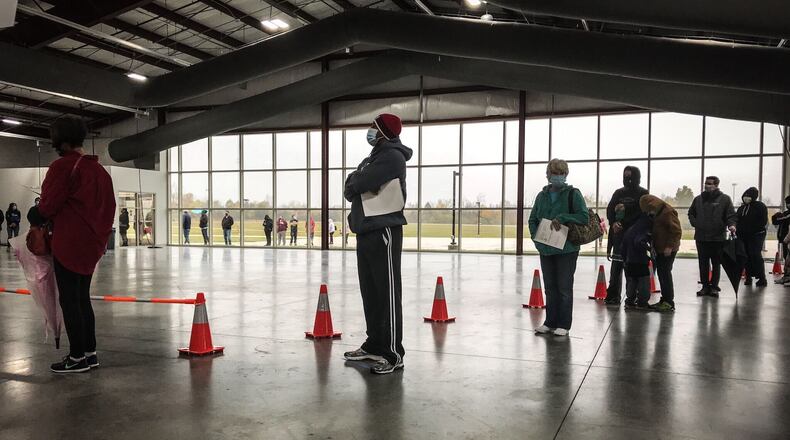The governor said the purple level 4 guidance is to stay home except for necessary travel to get supplies and services. However, the state does not impose further restrictions on counties based on the alert level.
Montgomery County is currently a level three red county, according to the health adversary system. That means that there is “very high exposure and spread” here.
It’s a good time for local residents to carefully consider their travel and activities as the COVID-19 numbers continue to climb, Greater Dayton Area Hospital Association President and CEO Sarah Hackenbracht said.
“I think it is an appropriate time to be thinking about what we’re doing and whether those are essential activities right now," she said. "It is so important to realize we don’t always live, work and play in one county. Southwest Ohio is very connected, and this is a very highly transmissible and communicable virus, and it’s really thriving in Southwest Ohio. If you can avoid putting yourself and others at risk, now is the time to make that decision and be part of the solution.”
Mercy Health Springfield in Clark County is associated with GDAHA, and Hackenbracht said the organization has been monitoring all of its hospitals' needs as cases have increased. The concern is hospital resources could be stressed with an increase, so it’s important to be proactive.
Credit: Jim Noelker
Credit: Jim Noelker
“If we can avoid unnecessary transmission and look at our choices and decisions, like eliminating any unnecessary travel over the next couple of weeks, that will help us get back under control,” Hackenbracht said.
Southwest Ohio isn’t the only area seeing an increase. Friday marked the sixth time in 11 days the state had broken its daily coronavirus case record within 10 days.
DeWine said it’s “alarming” that 38 of Ohio’s 88 counties are in the red alert level 3, which he said was “close to half the state” in a Thursday post on his Twitter account.
“This is an increase from 29 red counties last week,” he said.
Clark, Cuyahoga and Hamilton counties are on a watch list because they already meet the threshold for level 4 now. The counties that meet six of seven indicators again next week would be moved up to purple level 4. The seven indicators measured are: new cases per capita; sustained increase in new cases; proportion of cases not in a congregate setting; sustained increase in emergency department visits for COVID-like illness; sustained increase in outpatient visits for COVID-like illness; sustained increase in new COVID hospital admissions; and intensive care unit bed occupancy.
Clark County Combined Health District Commissioner Charles Patterson said he wants to keep the county out of the purple level.
"We are not purple yet, the watch list simply means that if we hold steady at six indicators, or raise to seven, we will move to purple next week,” Patterson said. “In order for Clark County to not move up to purple, the whole county will need to work together to increase the number of individuals wearing masks, increase the distance between everyone, and decrease the amount of time spent with individuals outside of your home.”
Ohio’s cases are mostly due to community spread, and DeWine said it’s time for people to take the pandemic seriously and to follow all of the health guidelines such as wearing masks, social distancing, frequent handwashing and avoiding gatherings.
Level 1 (Yellow): Active exposure and spread
Level 2 (Orange): Increased exposure and spread
Level 3 (Red): Very high exposure and spread
Level 4 (Purple): Severe exposure and spread
About the Author


